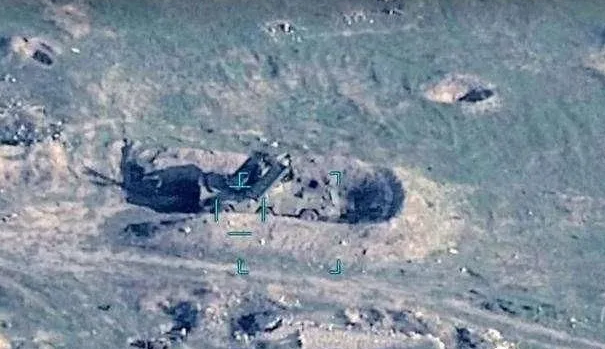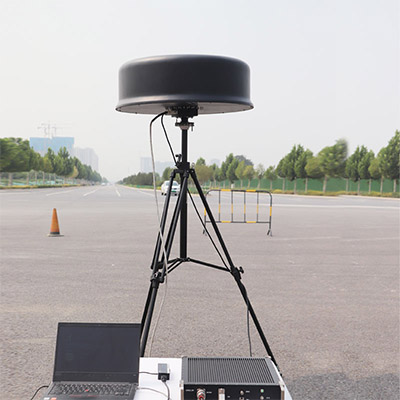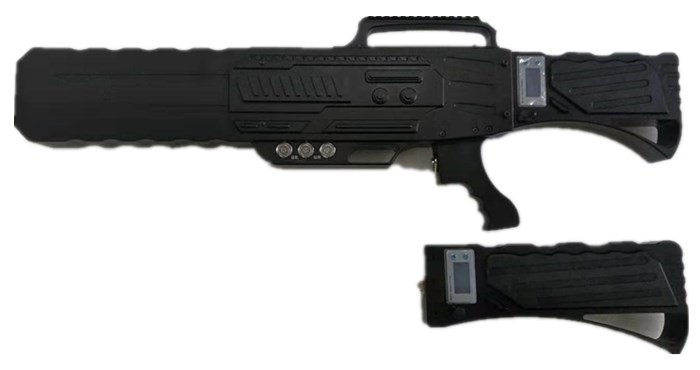he Passive RF Detection system analyzes and identifies the remote control signal and data return signal of drones, detectes target and early warning
Navigation Tricking System launch fictitious satellite navigation signal, block the real navigation signal in the air, falsify the navigation system of drones, change the auto location of drones, induce the drone to make a false response and get away from
The system are using a combination of day light TV and thermal infrared image sensor, steady continuous monitoring and tracking targeted drones.
The long-distance detection and defense integrated equipment ZD02 is a product developed for large areas. The detection distance is up to 10km. The equipment is modularized in management and easy to operate. It can be quickly assembled and deployed according to the actual situation. It can work a...
Low-altitude surveillance radar is mainly used to detect ground, sea and low-altitude targets. It has excellent anti-interference ability, ground/sea clutter suppression ability, and can actively detect and track targets.
LEAVE A Message
The “natural enemy” of drones is here, and the XINDA “traceable” anti-drone system is coming
Drones were still a rare "object" during the Gulf War! Today, however, this equipment has almost dominated the entire war. Take the recent conflict between Armenia and Azerbaijan. Two "peripheral" countries whose names you might not know if it weren't for the war have already used drones so thoroughly! Armed reconnaissance, combating tanks, destroying fortifications, special operations, etc. have all been used "arbitrarily" in this conflict. The key point is that the price of this equipment is quite cheap, and a small country like this can also afford it! Then we can imagine what the future wars will look like if conflicts break out among the real military powers?

Take the United States as an example. From 2002 to 2010, the number of UAVs increased by 40 times. In 2010 alone, the number of UAVs owned by the U.S. military exceeded 11,000 (large, medium, small, and micro UAVs). All models are included). By 2018, the number of medium and large UAVs of more than 20 kg equipped by the U.S. military reached about 3,500. Although most of the missions performed by these UAVs are based on aerial reconnaissance, there are still about 1,000. The aircraft can carry weapons and can perform various combat missions. At the same time, the U.S. military will continue to expand this drone team in the future, and the corresponding budget is also rising year by year. At present, the annual investment for drones is close to tens of billions of dollars!
The current mainstream anti-UAV technologies mainly include:
Audio detection: Early warning is provided by monitoring the special sound emitted by the drone! Especially propeller drones, but this method is only suitable for use in open areas, it is difficult to function in high-noise areas like cities!
Radio interference: Use the strong electromagnetic interference released by the jammer to block the data connection between the drone and the operator. This equipment can be fixed or mobile, but its working range is limited and requires a lot of energy!

Radar technology: In fact, this technology can only have a relatively good effect on the kind of large drones, such as small and micro drones flying at low altitudes, which have almost no effect. In 2015, a small drone once traversed the layers of protection of the White House and landed on its lawn. In the end, it was discovered with the naked eye of secret service personnel. Therefore, the role of radar technology in dealing with small UAVs is not particularly obvious.
Video detection: This technology is generally used in combination with other detection methods. The use of sensors to capture the silhouette of aerial vehicles can only be used as an auxiliary or recording method, rather than the main anti-UAV technology.
Thermal imaging technology: This method is also an auxiliary technology that uses the thermal radiation generated during the flight of the UAV to detect the position, and combines other technologies to complete the early warning and positioning of the UAV.

Recently, we have developed a technology that can completely remove the drone control room far behind. Researchers use satellites to collect the flight path of the drone, and use a self-built intelligent network to control the flight and signal of the drone. The receiving method is analyzed, and the position of the drone's control terminal can be predicted through cloud data calculation. It is currently being tested. It is said that its accuracy rate is as high as 78%, and the response time is quite fast.
According to experts, the UAV control room generally does not only operate one UAV, it may control multiple or even dozens of aircraft at the same time. If you use the method of fighting one by one, not only the ground personnel are exhausted and the effect is not good, but the economic cost is also unaffordable. However, if this "traceable" anti-drone technology is successfully used, then as long as the drone is controlled If the person is not thousands of miles away, then anti-drone will become very simple. Of course, this kind of system can only be aimed at the existing manned drones. If there are intelligent drones that can operate completely autonomously in the future, what the defense forces need is powerful air defense weapons. And more advanced detection devices.





